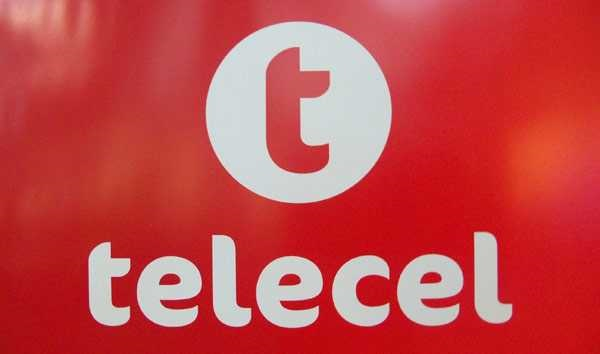Why Service Prices Are Rising While Goods Stay Flat Amidst Tariff News

Why Service Prices Are Rising While Goods Stay Flat Amidst Tariff News
gettyPresident Trump's tariffs were expected to drive widespread price increases across the U.S. economy. Just months into 2025, that prediction has proven only partially correct.
Consumer prices rose 2.4% in May, up slightly from April's 2.3% increase. However, the data reveal an unexpected split in how different sectors are responding to tariff pressures. Goods that economists anticipated would see significant price hikes are instead declining.
The service industry experienced a markedly different reality. Federal Reserve data shows that nearly half of service-oriented companies have already passed tariff-related cost increases to customers, compared to just one-third of goods-producing businesses.
Manufacturers stockpiled goods before tariffs took effect, allowing them to maintain current pricing using pre-tariff inventory. Service businesses, however, cannot stockpile labor or defer rising operational costs, forcing them to adjust prices.
For business leaders, this split presents both opportunities and challenges as they navigate pricing strategies in an environment where consumer demand remains cautious and economic uncertainty persists.
May's Consumer Price Index data reveals a striking disconnect between predicted and actual price movements in goods-heavy sectors. Categories economists identified as most vulnerable to tariff pressures posted unexpected declines instead of the widely anticipated increases.
New vehicle prices dropped 0.3% in May, while used cars and trucks fell 0.5%. Apparel costs decreased 0.4%, and furniture prices recorded their steepest decline since December at 0.8%. These sectors depend heavily on international supply chains and were positioned to absorb the first wave of tariff-related cost increases.
The price stability stems from proactive business strategies implemented months before tariffs took effect. Companies across manufacturing sectors accelerated purchasing schedules and expanded warehouse capacity to secure inventory at pre-tariff costs. This forward-thinking approach created a pricing cushion that continues to shield consumers from immediate cost increases.
Current inventory levels reflect these advanced purchases, enabling retailers to maintain competitive pricing while competitors exhaust similar stockpiles. The strategy has proven particularly effective in the automotive and consumer goods sectors, where longer product cycles allow for extended inventory turnover periods.
Energy costs reinforced the downward pressure on overall goods pricing, declining 1% monthly as gasoline prices retreated. Even sectors showing price increases, including major appliances and automotive parts, registered only modest gains, insufficient to counteract broader deflationary trends across goods categories.
This protection mechanism has clear limitations, though. Industry analysis suggests most companies built three-to-six-month inventory buffers, meaning tariff impacts will likely surface in late summer or early fall as stockpiled goods are depleted and replacement inventory reflects current tariff rates.
While goods-producing companies benefit from inventory buffers, service providers have to adjust prices immediately when costs rise. Nearly half of service-oriented companies' rising prices reflect the sector's inability to defer cost increases through stockpiling strategies.
Service businesses face real-time cost pressures that cannot be warehoused or delayed. Prices for services rose 3.7% in September 2024 from a year prior, according to the personal consumption expenditures price index, while goods prices fell 1.2% during the same period.
Labor represents the primary expense driver, and wage increases translate directly into operational costs without the cushioning effect available to manufacturers. This constraint has created persistent inflationary pressure across multiple service categories, even as goods prices decline.
Restaurant operators exemplify these challenges. Food services inflation reached 3.6% in September, driven largely by mandatory wage increases and competitive labor markets. Chains including McDonald's and Chipotle have implemented menu price adjustments to offset rising labor costs, with executives indicating continued pressure from wage inflation throughout the year.
The insurance sector demonstrates similar patterns, with household insurance premiums climbing 10.1% annually and auto insurance rising 6%. Factors such as increased storm damage and higher repair costs could be driving factors, as well as the immediate nature of claim settlements, which prevents the delayed pricing adjustments possible in goods industries.
Housing costs, particularly rental markets, show one of the most pronounced service inflation rates at 5.1% annually. Unlike manufactured products, housing services reflect immediate market conditions with limited ability to smooth cost increases over time. Travel services face comparable pressures, with air transportation costs up 4.1% as operational expenses rise in real-time.
The disconnect between tariff expectations and actual price increases reflects a broader dynamic of consumer wariness and business reluctance to test pricing power. Recent McKinsey research reveals that consumer sentiment dropped 32% in May following tariff announcements, creating a cautious spending environment that constrains retailers' ability to implement price increases.
Survey data shows 91% of consumers have heard about tariffs in news coverage or discussions, with tariff policies ranking as the second-highest consumer concern after inflation. This heightened awareness has translated into behavioral changes, with more than 60% of consumers reporting they have either altered spending habits or expect to do so in response to tariff announcements.
One thing to note is that consumer responses vary significantly by demographic group. Lower-income households show greater sensitivity to potential price increases, with these consumers 13 percentage points more likely to switch to lower-priced brands compared to those earning over $100,000 annually. Generational differences also emerge, as Gen Z and millennial consumers express a higher likelihood of changing spending patterns compared to baby boomers.
These shifting consumer behaviors create a challenging environment for retailers considering price adjustments. Half of consumers indicate they plan to delay purchases in discretionary categories, including electronics, accessories, and dining out. This demand sensitivity explains why businesses remain hesitant to implement tariff-related price increases, even when facing higher input costs.
While unemployment remains steady at 4.2%, industries exposed to tariffs face mounting pressure that could reshape employment patterns across sectors.
Companies relying on imported materials, from steel to semiconductors, face margin compression that typically leads to hiring freezes or workforce reductions. A furniture manufacturer dependent on imported lumber may reduce shifts to offset rising costs, while auto parts suppliers grappling with pricier steel imports could scale back expansion plans.
However, tariff policies create winners alongside losers. Domestic industries less reliant on foreign inputs, particularly in the energy and technology sectors, may benefit from reduced international competition. High-skill workers in finance and technology may exhibit greater resilience to trade disruptions, while low-skill manufacturing and logistics workers bear disproportionate impacts, including reduced hours and potential job losses.
Consumer inflation expectations reveal conflicting signals that complicate economic forecasting. A survey conducted by the University of Michigan shows Americans expect prices to increase 6.6% over the next year, the highest reading since 1981, suggesting deep-rooted concerns about future price stability.
However, Federal Reserve Bank of New York data presents a contrasting narrative, with consumers expecting lower inflation following the Trump administration's tariff pullback in April, which highlights the sensitivity of expectations to policy announcements rather than actual price movements.
The timing of when tariffs raise prices will determine whether consumers expect more inflation ahead, although economists anticipate that tariff-related price increases will become more pronounced during summer months as inventory buffers are exhausted.
The Federal Reserve may increasingly factor in consumer sentiment and behavior when setting policy. With evidence that cautious consumer spending is helping to curb inflation, the Fed could scale back aggressive rate hikes and rely more on forward guidance and market signals, especially if wage gains remain modest and employment remains strong.
Meanwhile, President Trump has renewed calls for rate cuts, urging the Fed to slash rates by a full percentage point if price pressures ease further, a move he believes would jumpstart growth.
However, Fed officials have warned that tariff-driven inflation risks could yet prompt them to maintain the current rates. As long as tariffs remain in place, the Fed appears likely to maintain its cautious stance, watching both consumer psychology and trade policy for signals on future rate moves.
The tariff story of 2025 has unfolded differently than expected. Manufacturers stockpiled inventory to keep prices stable, while service companies raised prices immediately. This created unusual inflation where goods became cheaper as services grew more expensive. Consumer caution and business reluctance to raise prices delayed anticipated increases. However, as companies exhaust their inventory buffers, tariff-related costs will likely reach consumers. Business leaders must recognize these timing differences across sectors to navigate an unpredictable economic environment.











